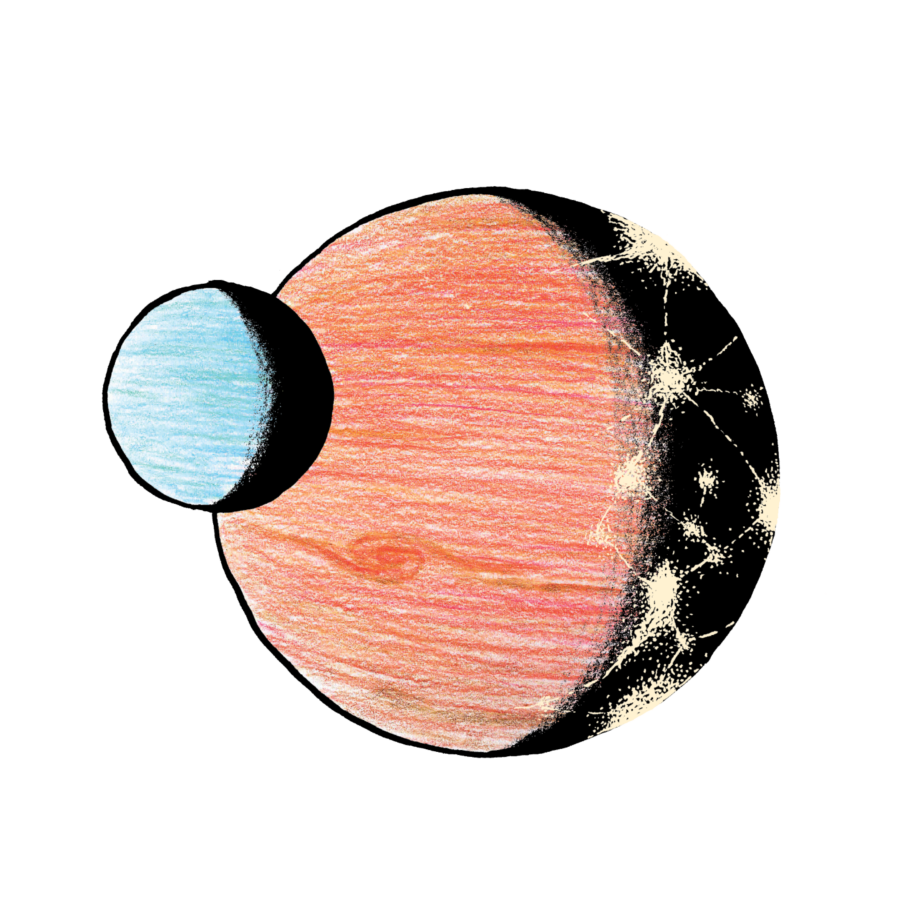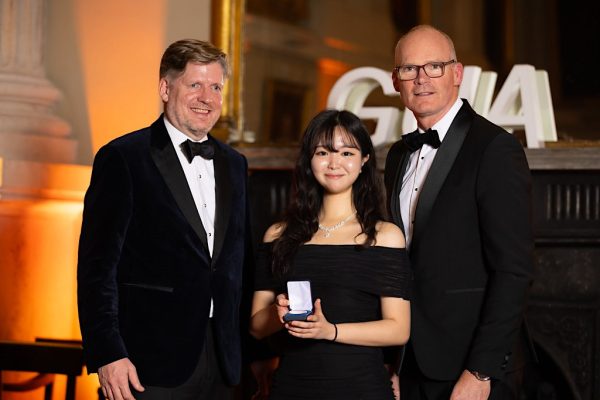Astronomy 330 explores life in space beyond ‘theories’
Feb 10, 2015
Last updated on June 14, 2016 at 08:35 a.m.
For students who have always suspected the existence of life beyond Earth, a class offered at the University strives to prove these speculations using a scientific basis. Astronomy 330: Extraterrestrial Life is designed to study the scientific foundation of how life forms begin and are able to survive on Earth, proving that there is life on other planets.
Robert Brunner, professor of the course, said he believes the possibility of civilizations in other parts of the universe must be acknowledged. Brunner went on to discuss how his lifelong interest and curiosity about how the universe works inspired him to study observational cosmology.
“I’ve been led to grand questions such as, ‘What’s out there?’ ‘Where do we come from?’ ‘Are there things beyond our physical horizon?’” he said.
The Drake Equation as the syllabus
Get The Daily Illini in your inbox!
According to Brunner and other scientists, the existence of life on other planets can be proven. The basis of the course is centered on the Drake Equation, a formula designed 54 years ago by Dr. Frank Drake when he was asked to ponder the possibility of life in outer space. The equation addresses a number of terms that must be recognized to determine how life outside of Earth may be sustained.
The questions are meant to build off one another: How many stars are born each year? What’s the likelihood there’s planets around those stars? How many of those planets could support life? What’s the fraction of life that can evolve? What’s the fraction of intelligent life that can communicate?
Brunner said he will wrap up the class by asking his students to consider the final term of the Drake Equation, which he believes is one of the most important questions to address: to calculate the lifetime of a civilization.
Students are forced to think historically, currently and futuristically to conclude whether or not the average lifetime on Earth is comparable to civilizations that may exist elsewhere. Through these questions, Brunner has come to his own conclusion that there are up to a few thousand civilizations in the universe.
“That’s generally mind-blowing to students,” Brunner said. “The universe is so enormous that we cannot wrap our heads around it.”
In order to promote the importance of questioning and verifying, Brunner makes the class extremely interactive. Although it used to be a small discussion, a sparked interest compelled the University to expand the class size; once a class of 30 students, it is now one of 150. Real-world, current technology, such as Twitter and Apple TV, are employed as tools for the class. Students are able to watch videos that address the topics they’re discussing, tweet their questions, ideas and discoveries to Brunner, all of which make class presentations creative and fun.
This is not merely a class for students who believe in aliens, but for students who question with genuine scientific interest how Earth could be the only planet able to maintain life.
Casey Jones, freshman in LAS and astronomy major enrolled in the course, said she hopes to walk away from this class with a better understanding of Earth’s evolution to verify her belief that life may exist in otherparts of the universe.
“I don’t know in what capacity, but I think that there is absolutely no way that we are the only life in this universe,” she said. “There has to be something besides us.”
Jones said she supports Brunner’s intuition on the possibility of life on other planets is not completely unbelievable; however, when asked whether or not she fully believes there is already life in outer space, Jones said she cannot be fully certain until she’s received all of the scientific facts to back it up.
Theory vs. speculation
This uncertainty is widespread. With much of the population questioning this scientific theory, Brunner said the skepticism is due to the limited access humans have to areas outside of earth.
“We are limited by the speed of light,” he said. “So it makes sense that we aren’t being visited because they’re so far away. And one blurry photo of a UFO doesn’t prove anything.”
This, combined with what he calls an “innate curiosity,” is what interested Brunner in astronomy and teaching the class. He said he believes most people confuse the meanings of theories and hypotheses, which is why they are hesitant to accept that there are other civilizations besides our own.
“In science, a theory is anything that we can prove 100 percent because there is evidence to support that, such as gravity,” Brunner said. “People take the popular use of the word ‘theory’ and apply it to science, and this forces them to believe scientific fact may not be right despite evidence.”
Astronomy 330 is a class that attempts to help students appreciate the scientific process. Brunner claims that the major issue today is the fact people believe scientists know what they are talking about, but when it comes to believing what scientists say, there is a gap.
“What scientists say is true is based on scientific method; however, the public will say that maybe it’s true, and that’s an issue,” he said.
Brunner states that the class is not merely an astronomy class; although the foundation is astronomical, subjects such as evolution, biology, geology, culture, history, paleontology and sociology are examined due to the fact that each of those factors are involved in life in general.
“There really is a lot of uncertainty,” he said. “We emphasize that each of these terms shows us where to find all of the evidence that other civilizations in the universe do exist.”
The students participating in the class understand and appreciate the fact that science is the core of this course; therefore, their confusion or skepticism about extraterrestrial life is justified.
“I still haven’t come to a conclusion because I still don’t have all of the solid evidence to say ‘yes’ or ‘no,’” said Aamodini Gupta, freshman in LAS and current student in the course. “It’s still a maybe.”
Astronomy 330: Extraterrestrial Life is backing up the intrigue of science fiction by using real, complex scientific facts.
Brunner states, “We are addressing and contemplating the questions that humanity has had forever.”
Rachel can be reached at [email protected].






